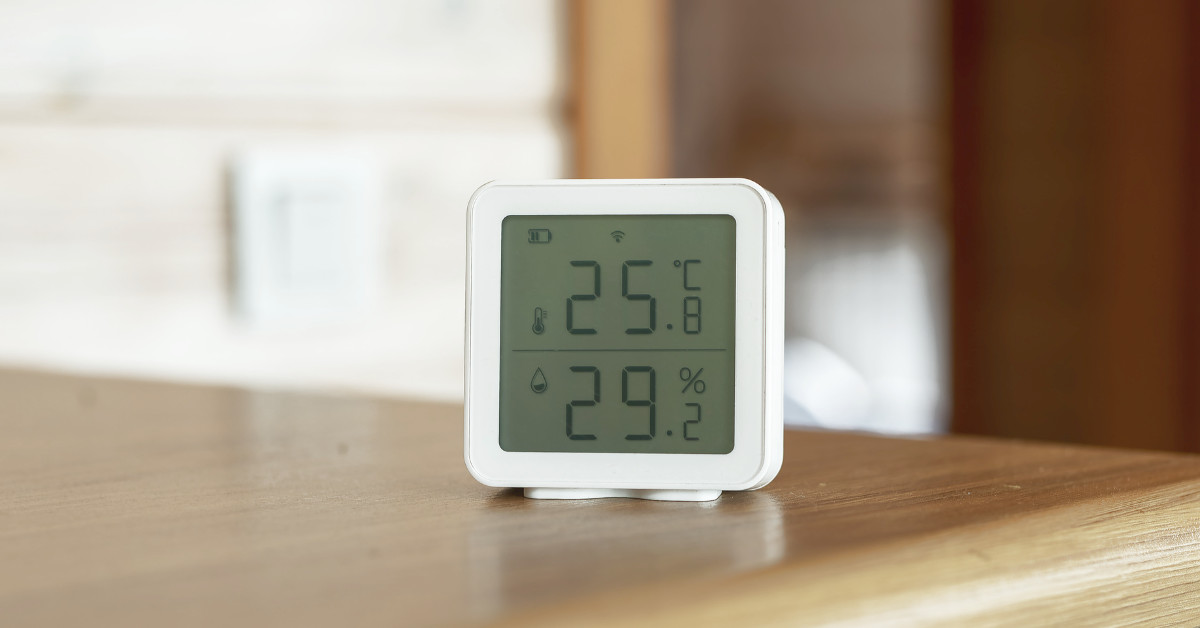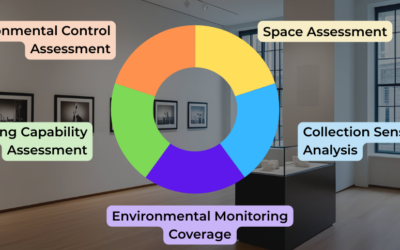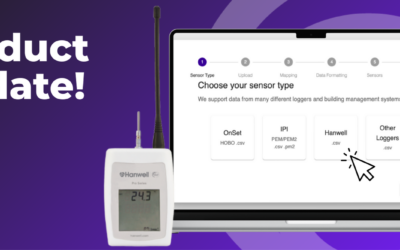Museum data loggers are critical tools for ensuring the longevity and preservation of museum collections. Choosing the right data logger can significantly impact the accuracy of your environmental monitoring efforts, the amount of time your staff needs to monitor the collections environment, and your ability to respond quickly to emergencies. Today, we explore the six best museum data loggers available, comparing their advantages and potential drawbacks.
1) Conserv Wireless Environmental Monitoring Platform
First off, please forgive us for this shameless plug of our environmental monitoring platform as number one, but our system is the only comprehensive and purpose-built environmental monitoring solution out there.
Although Conserv offers data loggers that read temperature, humidity, light, movement, and leak detection, Conserv’s wireless environmental monitoring platform is not just about museum data loggers. Conserv sensors use LoRaWAN technology to give you coverage in hard-to-reach areas or spaces where Wi-Fi is not an option. LoRaWAN also means that sensors can work hundreds feet away from your gateway, even on different floors. Real-time alerts allow you to program the system to send you notifications whenever your sensors or gateway are offline or if your environmental parameters veer off your desired conditions. Conserv Cloud also allows you to add unlimited users to maximize collaboration and information sharing during exhibitions, loans, and general collections care duties.
Conserv Cloud also allows you to add unlimited users to maximize collaboration and information sharing. The subscription system means that Conserv replaces your sensors every three years so that your equipment never gets old – and guess what? Thanks to the low power draw of LoRaWAN, the batteries last so long that your sensors will likely get replaced before they run out, so you will never have to change batteries again.
Should you have any questions, Conserv’s support and sales teams are composed of experienced museum conservators who understand your challenges and will be able to advise you based on your unique situation.
The Conserv customer base is made up entirely of heritage institutions, so you can be sure that you are getting personalized service that has been designed for cultural heritage professionals. On top of that, the product development team is constantly updating the software based on customer requests and suggestions so you will not find yourself with outdated software and discontinued support.
2) Testo 160 Series
The Testo 160 Series‘ boasts a WiFi monitoring system with “small, inconspicuous design”, automatic uploads to the Testo Cloud and customizable alarms via e-mail or text message. It measures temperature, humidity, light, and UV radiation, offering an all-in-one solution. One thing we like about the Testos is the variety of colors they offer so the logger will blend seamlessly with your exhibit. This solution requires a subscription to Testo’s Cloud, which means that, just like with Conserv, you are not just buying a museum data logger, but a subscription service. Unfortunately, pricing is not available on their website, so you might have to contact them for a quote.
3) Onset HOBO Data Loggers
Known for their superior performance and versatility, as well as their partnership with IPI’s eClimate Notebook, Onset’s HOBO Data Loggers have been utilized in institutions like the Hunter Museum of American Art and the National Music Museum among others.
HOBO Data Loggers are renowned for their accuracy and durability. They measure a wide range of environmental conditions, including temperature, humidity, light intensity, and UV radiation. Some of the more expensive models also have a CO2 sensor. Information can be downloaded through Bluetooth or direct USB connection. You can get their cheapest temperature and relative humidity data logger in the MX1100 series for $155 or pay $210 to get the light sensor as well. HOBO data loggers require you to create an account, connect your gateways to WiFi or Ethernet and then configure the loggers to your gateway. You must keep in mind that your loggers will have to be within 100 ft of your gateway to be able to connect. You will also have to pay separately for their cloud subscription service.
4) Tinytag Data Loggers
Tinytag Data Loggers by Gemini are user-friendly and robust, making them a popular choice for museum environmental monitoring. We absolutely love the wide range of models they offer for different environmental factors. They are also a very cost-effective solution for small institutions. Depending on the model, the sensors in TinyTags can read an impressively wide range of even extreme temperatures (-200 to 250°C / -328 to 482°F) so they have been used in Antarctic collections and freezers. You can download your information using a USB cable or Radio LAN connection on a computer, which requires some user setup. TinyTag data loggers also offer calibration certificates for purchase in case you need them.
While user-friendly, Tinytag Data Loggers lack the advanced analytical capabilities of some other options on this list, which may limit their use in larger, more complex environments. For the non-USB models, they are limited to a 200m (656ft) range between the loggers and the receiver.
5) Hanwell Environmental Monitoring Solutions
Hanwell’s environmental monitoring solutions are established museum data loggers and are used in world-renowned institutions like the Victoria and Albert Museum, the Louvre and The Imperial War Museum.
Hanwell systems offer high-quality data loggers with exceptional range and longevity. Their systems can monitor a broad spectrum of environmental conditions, and their advanced software options provide comprehensive data analysis. As opposed to some of the other museum data loggers on this list that measure several things with the same device, Hanwell has separate sensors for temperature and relative humidity, light and UV, oxygen for anoxia treatments, and shock and vibration. This means that you will have to have more than one logger in place if you are taking different types of measurements.
One interesting feature is the ability to present the data from sensors in a floor map color coding the parameters established for the sensor according to whether the data is within limits or if it has surpassed them. This was used at the V&A for a special project which you may read about here.
Prices are not readily available on the Hanwell website, but as an established vendor for high quality museum loggers, they will be one of the more expensive options on this list.
Important note about Hanwell – Early in 2024, Hanwell announced that Gwentec would be taking over the distribution of all products for the heritage market in England and Wales, effective immediately. While we cannot say how this will affect heritage users in the UK in the long run, it is an important piece of information that you can take into account if you are looking into purchasing new solutions in 2024.
Conclusion
There are so many aspects to consider when buying a museum data logger for your spaces. What’s your budget? What’s your staff time? Do you have wireless connectivity in your spaces? Do you want an integrated light sensor? Do you need it to be resistant enough to go into a freezer for your pest treatments? Do you want the software to make reports automatically? Do you prefer a one-time purchase or continued support? We hope this list helps you think about your needs and how each data logger (or environmental monitoring platform) might suit you best.
If you have any questions about environmental monitoring, integrated pest management, or just want to talk about preventative conservation, please reach out to us! Don’t forget to check out our blog or join our community of collections care professionals where you can discuss hot topics, connect with your peers or even take a course to get familiar with the Conserv platform.




